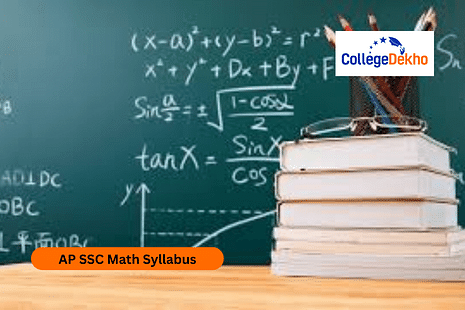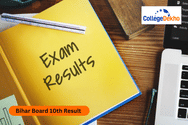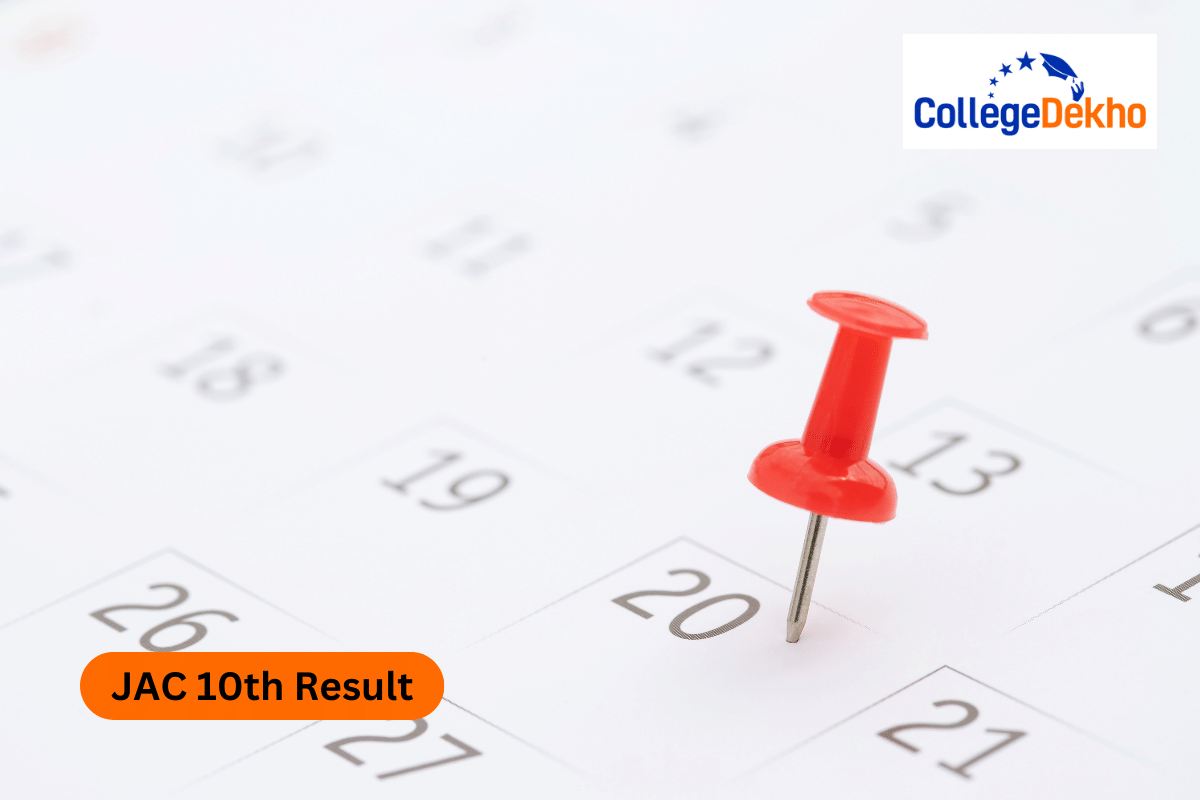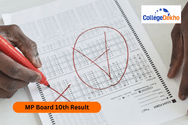

Never Miss an Exam Update
AP SSC Math Syllabus 2025:
The Andhra Pradesh Board has released the AP 10th Math syllabus for the academic session 2024-25 on its official website. No new changes have been made in the AP SSC Math Syllabus 2025 for this year. The AP Board 10th Math Syllabus 2025 covers a total of 7 units, which are further divided into various chapters and sub-topics. AP Class 10 Maths Syllabus 2025 covers real numbers, polynomials, a pair of linear equations in two variables, quadratic equations, arithmetic progressions, trigonometry, heights and distances, and statistics. The maximum weightage carrying unit is Unit 2, Algebra, and the second highest weightage carrying unit is Unit 5, Geometry.
Students are advised also to go through the
AP Board class 10 exam pattern 2025
for Math to have a clear overview of the marking scheme. Meanwhile, students can refer to the previous year’s syllabus to start their preparations for the final exam. The syllabus is designed to assist students in establishing a strong mathematical foundation in class 10, which will help them further in class 12 and competitive exams. The
AP SSC time table 2025
has been released on December 11, 2025. Students can check the detailed AP SSC Math Syllabus 2025 below.
Also Read: AP SSC Results 2025
Latest Updates:
- March 13, 2025: The AP SSC examination 2025 will be held from March 17 to March 31, 2025, in pen and paper mode. The exams are scheduled to be held in single shifts from 9:30 am to 12:45 pm.
AP SSC Math Syllabus 2025
By learning the topics covered in the syllabus, students will build a solid foundation in mathematics that will help them in their future studies and jobs. Students can review the syllabus’s chapter-wise themes.Unit | Chapter |
|---|---|
Unit-I | Number System |
(i). | Real Numbers More about rational and irrational numbers. • Fundamental Theorem of Arithmetic – statements. • Proofs of results, irrationality of 2, 3 etc. and decimal expansions of rational numbers in terms of terminating, non-terminating, recurring, and vice versa. • Properties of real numbers • Introduction of logarithms • Conversion of a number in exponential form to a logarithmic form • Properties of logarithms loga a =1; loga 1=0 • Laws of logarithms log xy = logx + logy; log x/y = logx – logy log xn = n log x • Standard base of logarithms and usage |
(ii). | Sets - Sets and their representations: Empty set, Finite and infinite sets. Equal sets. Subsets, subsets of the set of real numbers (especially intervals with notations). Universal set and cardinality of sets. • Venn diagrams: Union and intersection of sets. Difference of sets. Complement of a set. Disjoint sets. |
Unit-II | Algebra |
(i). | Polynomials • Zeros of a polynomial. • The graph-based geometric interpretation of the zeros of cubic and quadratic polynomials. • The relationship between a polynomial's zeros and coefficients, with an emphasis on quadratic polynomials. • Statement and simple problems on division algorithm for polynomials with integral coefficients. |
(ii). | Pair of Linear Equations in Two Variables. • Pair of linear equations in two variables. Geometric representation of different possibilities of solutions / inconsistency. • Algebraic conditions for number of solutions. • Using cross multiplication, substitution, and elimination to solve a pair of linear equations in two variables. • Simple equation-related problems that can be reduced to linear equations. |
(iii) | Quadratic Equations • The quadratic equation ax2 + bx + c=0, (a 0), in standard form. • Solving quadratic equations using the quadratic formula by factorization and completing the square (only for real roots). • The association between the roots' nature and the discriminant. |
(iv) | Progression • Sequence and series • Motivation for studying AP. Derivation of standard results of finding the nth term and sum of first n terms. • Motivation for studying G.P. • nth termof G.P. |
Unit-III | Trigonometry |
(i) Trigonometry Introduction • Trigonometric ratios of an acute angle of a right-angled triangle i.e. sine, cosine, tangent, cosecant, cotangent. • Motivate the ratios, whichever are defined at 00 and 900 • Values (with proofs) of the trigonometric ratios of 300, 450 and 600. Relationships between the ratios. • Trigonometric Identities: Proof and applications of the identity sin2A+cos2A=1. 1+tan2A=sec2A cot2+1=cosec2 | |
(ii). | Applications of trigonometry • Angle of elevation, angle of depression • Simple and daily life problems on heights and distances. Problems should not involve more than two right triangles and angles of elevation/ depression. |
Unit-IV | Co-ordinate Geometry |
(i). |
Lines (In two-dimensions)
|
Unit-V | Geometry |
(i) | Similar triangles Examples, definitions, and characteristics of similar triangles. • The distinction between triangle congruency and triangle similarity. • (Prove) The other two sides of a triangle are divided in the same ratio if a line drawn parallel to one side of a triangle intersects the other two sides in clearly defined points. • (Motivate) A line is parallel to the third side of a triangle if it divides the first two sides of the triangle in the same ratio. • (Motivate) If the corresponding sides of two triangles are proportionate, the corresponding angles are equal, and the triangles are comparable (AAA). • (Motivate) If two triangles' corresponding sides are proportionate, their corresponding angles are equal, and the two triangles are similar (SSS), then the two triangles are similar. • (Motivate) Two triangles are comparable if one of their angles is equal to another triangle's angle and the sides that include these angles are proportionate. • (Prove) The ratio of the squares on the corresponding sides of two comparable triangles equals the ratio of the areas of the triangles. |
(ii) | Construction • Dividing a line segment utilizing the fundamental proportionality theorem. • A triangle that, using the scale factor given, is comparable to the given triangle. |
(iii) | (iii) Tangents and secants to a circle • Tangents to a circle motivated by chords drawn from points coming closer and closer to the point. • (Prove) The tangent at any point of a circle is perpendicular to the radius through the point of contact. • (Prove) The lengths of tangents drawn from an external point to a circle are equal. • Segment of a circle made by the secant. • Finding the area of the minor/ major segment of a circle. |
Unit-VI | Mensuration |
(i). | • Problems involving calculating the surface areas and volumes of mixtures of any two of the following: cubes, cuboids, spheres, hemispheres, and right circular cylinders/cones. • Conversion-related difficulties, as well as other mixed challenges, including different types of metallic solids. (Problems with mixing more than two different substances at once should be taken.) |
Unit-VII | Data Handling |
(i). | Statistics • Revision of Mean, median and mode of ungrouped (frequency distribution) data. • Understanding the concept of Arithmetic Mean, Median and Mode for grouped (classified) data. • The meaning and purpose of Arithmetic Mean, the Median and the Mode • Simple problems on finding Mean, Median and Mode for grouped / ungrouped data. • Usage and different values and central tendencies through Ogives. |
(ii). | Probability • Concept and definition of Probability. • Simple problems (day-to-day life situation) on single events, simple using set notation. • Concept of complementary events. |
AP SSC Math Marking Scheme 2025
Refer to the table below to know about the marking scheme of the AP SSC Math exam for the academic session 2025:
| Chapters | 1 Mark Questions | 2 Mark Questions | 4 Mark Questions | 8 Mark Questions | Total Marks |
|---|---|---|---|---|---|
| Real Numbers | 1 | - | - | 1 | 9 |
| Polynomials | 2 | 1 | - | - | 8 |
| Pair of Linear Equations | 1 | - | - | 2 | 9 (8) |
| Quadratic Equations | 1 | 1 | - | 1 | 7 |
| Arithmetic Progressions | - | - | 1 | 1 | 5 (8) |
| Triangles | 1 | 1 | - | 1 | 11 |
| Coordinate Geometry | - | - | - | 1 | 2 (8) |
| Introduction to Trigonometry | 1 | 1 | - | - | 7 |
| Some Applications of Trigonometry | 1 | - | - | 1 | 3 (8) |
| Circles | 1 | 1 | - | - | 7 |
| Area Related to Circles | - | - | - | 1 | 8 |
| Surface Areas and Volumes | 1 | 1 | - | - | 7 |
| Statistics | - | - | 1 | 1 | 4 (8) |
| Probability | 1 | - | - | 1 | 13 |
| Total | 12×1 = 12 | 8×2 = 16 | 8×4 = 32 | 5×8 = 40 | 100 (40) |
AP SSC Math Syllabus 2025 Pdf
We have detailed the AP SSC math syllabus 2025, which is organized into seven sections: number systems, algebra, coordinate geometry, geometry, trigonometry, mensuration, statistics, and probability. These units are divided into 15 chapters. Download the AP Class 10 Math Syllabus 2025 PDF by clicking the link below.AP Class 10 Math syllabus 2025 PDF .
AP SSC Math Important Books 2025
Students must adhere to the important recommended books that are prescribed by the Board of Secondary Education, Andhra Pradesh (BSEAP), that is the APSCERT textbooks. Apart from these, students can refer to other reference books for better preparation. Some of the important books for AP SSC Math exam are as follows:- 10 th Class Math Text Book Part I - APSCERT
- 10 th Class Math Text Book Part II - APSCERT
- Ssc Advance Mathematics 2024 Edition English Medium
- Champion Publication Bilingual SSC Maths 8000+ MCQ By Gagan Pratap Sir
- SSC Maths 6800+ TCS MCQ Chapter-Wise
AP SSC Math Syllabus 2025 Aims
- To acquire knowledge and understanding of the terms, symbols, concepts, principles, processes, proofs, etc. of mathematics.
- To improve one's understanding of mathematical concepts and how to use them in subsequent math and science studies.
- To acquire the abilities to use mathematical knowledge to address challenges in the real world.
- To acquire the abilities required to use current technology, such as computers and calculators, in real-world situations.
- To develop drawing skills, and skills of reading tables, charts and graphs. To develop an interest in mathematics.
Was this article helpful?















